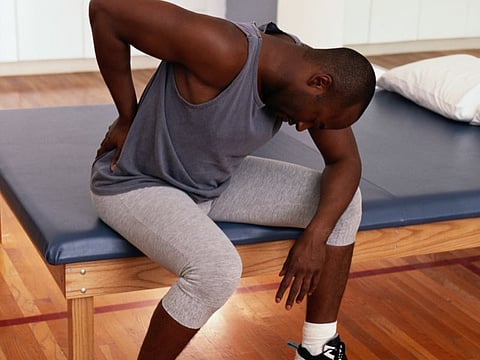WEDNESDAY, Nov. 29, 2017 (HealthDay News) -- Computed tomography (CT)-guided pulsed radiofrequency is beneficial for patients with acute or subacute neuroradicular pain from lumbar disc herniation, according to a study presented at the annual meeting of the Radiological Society of North America, held from Nov. 26 to Dec. 1 in Chicago.
Alessandro Napoli, M.D., Ph.D., from Sapienza University in Rome, and colleagues treated 80 patients with acute or subacute neuroradicular low back pain, refractory to usual treatments. Patients were treated with a 22-20 G needle-electrode with probe tip directed to the symptomatic dorsal root ganglion under computed tomography guidance. E-pulsed radiofrequency was administered for 10 minutes at 45 V.
The researchers found that there were reductions from 7.8 at baseline to 3.5, 2.6, and 1.3, respectively, at one week, one month, and three months after treatment in the median Visual Analogue Scale (VAS) scores; from 78.0 to 12.5, 6.0, and 5.5, respectively, in the median Oswestry Disability Index (ODI) score; and from 16 at baseline to 3.0 and 1.5, respectively, at one and three months in the Roland-Morris score for quality of life assessment (P < 0.001). Within the first month after treatment, 90.0 percent of patients reached a 0 VAS score, and 97.5 percent had a decrease of at least 20 points in ODI score.
"The results have been extraordinary," Napoli said in a statement. "Patients have been relieved of pain and resumed their normal activities within a day."
Press Release
More Information


